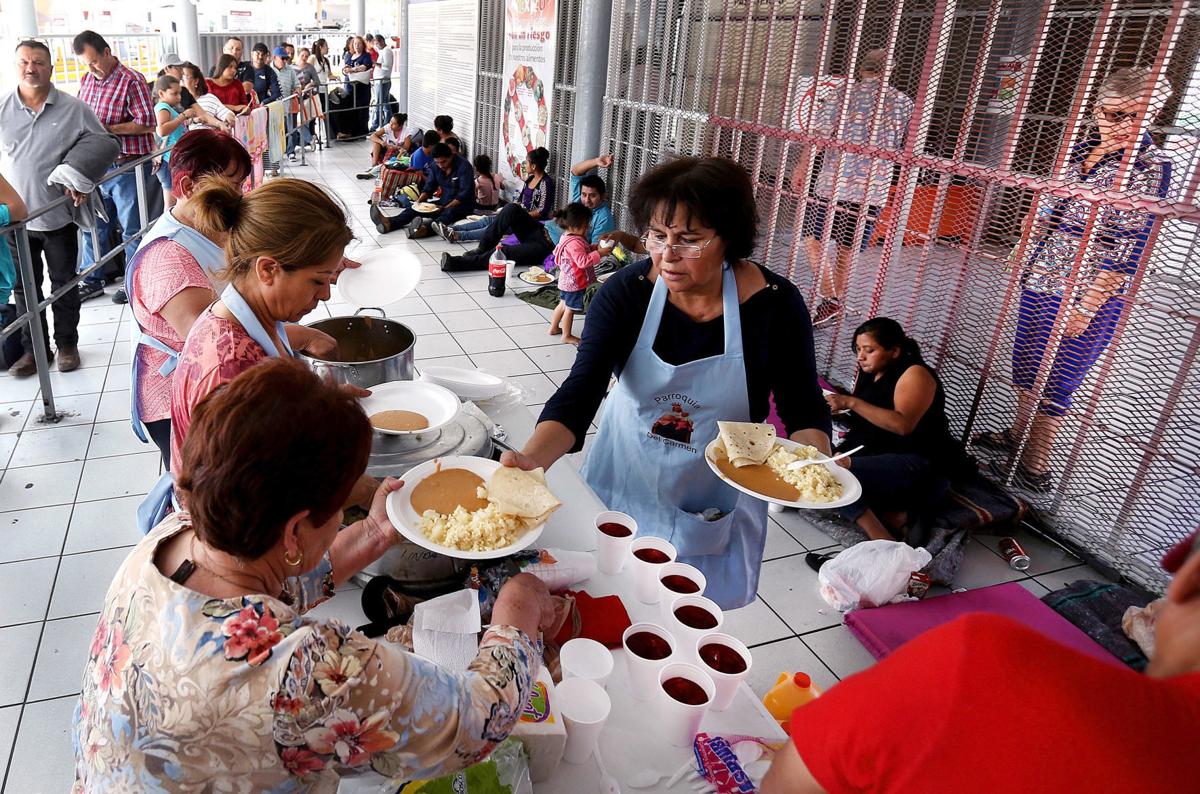Nogales, Sonora, is not in a position to take in more Central American asylum seekers for extended periods as they wait for their U.S. immigration cases to go through the system, advocates and officials said.
Neither are other Mexican border communities, they said.
“I don’t think there’s any border city that right now has either sufficient resources or the preparation to house these people for an extended period of time,” said Jorge Jauregui, city manager of Nogales, Sonora.
The mayor’s directive is to assist those who are coming through or being deported through the city, he said.
“We have resources and plans to assist in times of an emergency, but we would have to reach out for help to our partners in the state and federal government,” he said.
On Thursday, the U.S. Department of Homeland Security announced a new policy that would involve sending back to Mexico Central American asylum seekers while their immigration cases are pending. Under the Migrant Protection Protocols, unaccompanied minors and others deemed to belong to vulnerable groups, or who can show they face persecution or torture in Mexico, would be exempt.
Currently, many of the Central American families who arrive at a port of entry or who turn themselves in to Border Patrol agents are vetted and released with a notice to appear before an immigration official. That’s usually at a place where they have a friend or relative already in the country, but it may be years before they see a judge and their cases are resolved.
The government says many of these families are taking advantage of what it calls loopholes, laws that limit the time a child may be in detention to 20 days, and the lack of detention space for families.
Representatives from the Mexican government said during a news conference Friday that the U.S. would send back up to 20 people a day starting at the San Ysidro Port of Entry in California, with the idea that the policy would be gradually expanded to the rest of the border.
“The Mexican government does not agree with the unilateral measure implemented by the U.S. government,” said Roberto Velasco, spokesman for the Mexican Foreign Ministry. “Nonetheless, in line with our new migration policy, we reiterate our commitment to migrants and to human rights.”
Mexico will issue temporary humanitarian permits but will not accept unaccompanied minors or people who’ve been denied and are appealing their asylum claim or those with serious health problems, he said.
The real solution, he said, is to invest in the migrants’ countries of origin. “Migration should be a choice, not a necessity,” he added, echoing a message Mexico’s newly elected president, Andrés Manuel López Obrado, has reiterated, including at a rally in Nogales.
There’s not a lot of information about how the new plan, initially discussed in December, will be implemented. Neither Salvadoran nor Guatemalan consulate officials in Tucson had received any official notification from their governments about specific protocols, they said Friday.
“We respect the policies of the United States and remain vigilant of the situation,” said vice consul from El Salvador Julio Calderon. “We are committed to work the hours and days necessary to meet the needs of our Salvadorans.”
The nearest consulates from both countries on the Mexican side are in Tijuana.
According to media reports, DHS officials expect cases to be resolved within a year, with the first appointment taking place within 45 days of entry.
Even if it’s not immediately implemented across other parts of the border, cities like Nogales will feel the ripple effects as some migrants choose to cross elsewhere, said Joanna Williams, with the binational organization Kino Border Initiative.
“We are deeply concerned about the plan,” she said. “How will asylum seekers be safe in Mexico as they wait? I don’t think it’s possible to guarantee their safety and I don’t think it’s possible to guarantee due process.”
The Kino Border Initiative works with attorneys who offer “know your rights” presentations to the families waiting to be processed at the port of entry, but their capacity is limited.
“People who are able to retain counsel have a much bigger chance of winning their case, but how does someone retain counsel, visit their clients, help that person gather their documents from Mexico when they are from another country?” said Laura Belous, advocacy attorney with the Florence Immigrant and Refugee Rights Project.
“It’s enormously challenging logistically speaking,” she said. “And in general, another attack on asylum seekers.”
Most border cities have migrant shelters set up to serve mostly deportees. Increasingly, though, the need has come from the families waiting to present themselves at ports of entry as the government processes a few a day.
At one point last year, there were close to 200 people waiting to be processed at the port of entry in Nogales, with wait times extending to weeks.
There are four temporary shelters operated by nonprofits. The needs they would have to meet if families now had to stay there for months or years would be very different, Williams said, to include security protocols.
“Organized crime preys on migrants and they could become more exposed to violence once they are returned,” she said. “There are big scale and tiny logistical pieces that haven’t been contemplated.”





